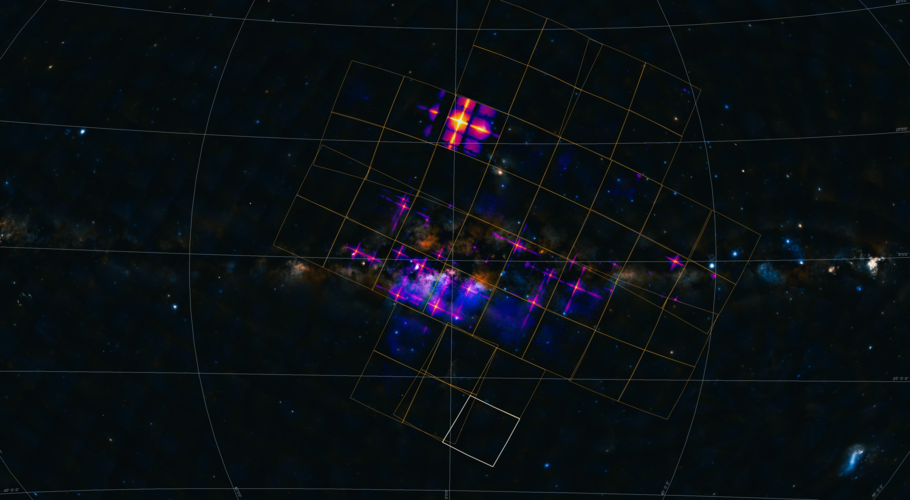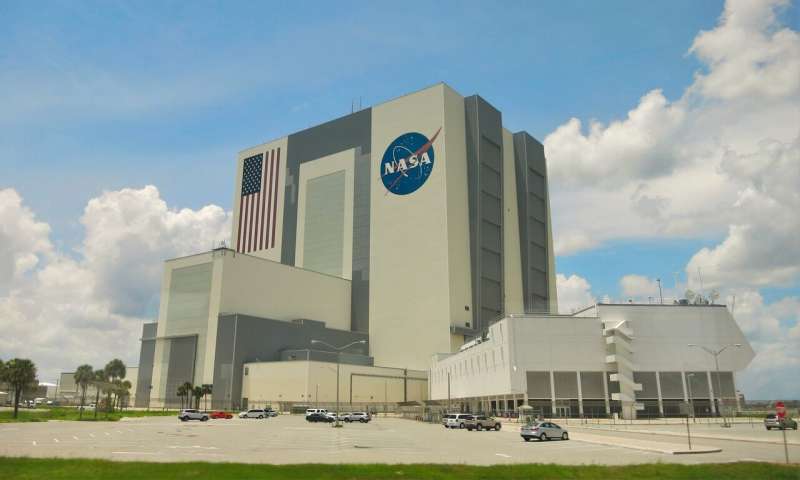AST Networks Acquires Reygar to Enhance Maritime IoT Capabilities
Saturday, 27 April 2024 19:58 AST Networks has expanded its technology portfolio with the acquisition of Reygar Ltd., integrating advanced performance monitoring systems for both crewed and un-crewed maritime vessels. This move strengthens AST Networks' position in the global maritime communication and connectivity sphere.
The acquisition aims to harness Reygar's expert
AST Networks has expanded its technology portfolio with the acquisition of Reygar Ltd., integrating advanced performance monitoring systems for both crewed and un-crewed maritime vessels. This move strengthens AST Networks' position in the global maritime communication and connectivity sphere.
The acquisition aims to harness Reygar's expert ESA launches space innovation hub in Austria
Saturday, 27 April 2024 19:58 A pioneering space innovation center has opened its doors in Vienna. This center, aimed at revolutionizing the design and manufacture of space hardware, marks the first ESA-supported disruptive innovation center established outside of ESA's facilities.
The newly opened center will prioritize the enhancement of space manufacturing capabilities, including the development of new materials, pr
A pioneering space innovation center has opened its doors in Vienna. This center, aimed at revolutionizing the design and manufacture of space hardware, marks the first ESA-supported disruptive innovation center established outside of ESA's facilities.
The newly opened center will prioritize the enhancement of space manufacturing capabilities, including the development of new materials, pr Hughes launches new manufacturing hub and private 5G center in Maryland
Saturday, 27 April 2024 19:58 Hughes Network Systems, LLC (HUGHES), an EchoStar company (Nasdaq: SATS), has opened a new manufacturing facility and private 5G incubation center in Germantown, Maryland, emphasizing the company's commitment to innovation and local development.
The facility, named the Hughes Manufacturing Facility (EXM), is responsible for producing U.S.-made hardware essential for various networks, inclu
Hughes Network Systems, LLC (HUGHES), an EchoStar company (Nasdaq: SATS), has opened a new manufacturing facility and private 5G incubation center in Germantown, Maryland, emphasizing the company's commitment to innovation and local development.
The facility, named the Hughes Manufacturing Facility (EXM), is responsible for producing U.S.-made hardware essential for various networks, inclu Enhanced gravitational wave detection accelerates neutron star and black hole research
Saturday, 27 April 2024 19:58 A recent collaboration led by the University of Minnesota Twin Cities College of Science and Engineering and an international team has developed new technology to improve gravitational wave detection. This advancement allows for sending alerts to astronomers and astrophysicists within 30 seconds of detection, significantly enhancing the study of neutron stars and black holes.
The researche
A recent collaboration led by the University of Minnesota Twin Cities College of Science and Engineering and an international team has developed new technology to improve gravitational wave detection. This advancement allows for sending alerts to astronomers and astrophysicists within 30 seconds of detection, significantly enhancing the study of neutron stars and black holes.
The researche Advisory committee recommends moving FAA commercial space office out of the agency
Saturday, 27 April 2024 17:04

Einstein Probe opens its wide eyes to the X-ray sky
Saturday, 27 April 2024 09:00
The first images captured by the innovative mission were presented at the 7th workshop of the Einstein Probe consortium in Beijing. They illustrate the satellite’s full potential and show that its novel optics, which mimic a lobster’s eyes, are ready to monitor the X-ray sky. The space X-ray telescope zoomed in on a few well-known celestial objects to give us a hint of what the mission is capable of.
Astronauts arrive at Kennedy Space Center as first crew for Boeing's Starliner spacecraft
Saturday, 27 April 2024 08:40
It's not just another ride for a pair of veteran NASA astronauts who arrived to the Space Coast ahead of their flight onboard Boeing's CST-100 Starliner.
Barry "Butch" Wilmore and Sunita "Suni" Williams, who both joined NASA's astronaut corps more than two decades ago, will be the commander and pilot for the Crew Flight Test mission of the much-delayed spacecraft.
It's set to launch with humans on board for the first time atop an Atlas V rocket from Cape Canaveral Space Force Station's Space Launch Complex 41 on May 6 at 10:34 p.m., headed to the International Space Station.
The pair flew into KSC in their T-38 jets, landing at the former space shuttle landing facility Thursday afternoon and speaking with reporters ahead of the vanguard mission.
"This mission going off well? Of course we want it to do that," said Wilmore from the tarmac. "Do we expect it to go perfectly? This is the first human flight of the spacecraft. I'm sure we'll find things out. That's why we do this. This is a test flight.
Lastest satellite advances China's remote-sensing capabilities
Friday, 26 April 2024 17:33 China Aerospace Science and Industry Corp (CASIC), a prominent player in the nation's space industry, has announced plans to deploy the initial satellite of an extensive remote-sensing network within the next few months, according to a project manager.
Zhang Chuan of CASIC Space Engineering Development, a subsidiary leading the initiative in Beijing, stated that the inaugural satellite of
China Aerospace Science and Industry Corp (CASIC), a prominent player in the nation's space industry, has announced plans to deploy the initial satellite of an extensive remote-sensing network within the next few months, according to a project manager.
Zhang Chuan of CASIC Space Engineering Development, a subsidiary leading the initiative in Beijing, stated that the inaugural satellite of NASA and FAA Unite to Advance Wildland Fire Management Technologies
Friday, 26 April 2024 17:33 NASA has teamed up with the Federal Aviation Administration (FAA) to form a research transition team dedicated to advancing wildland fire management technologies. This collaboration is responding to an increase in frequency and scale of wildland fires, as noted by the U.S. Forest Service.
The Wildland Fire Airspace Operations research transition team will explore and test innovative techno
NASA has teamed up with the Federal Aviation Administration (FAA) to form a research transition team dedicated to advancing wildland fire management technologies. This collaboration is responding to an increase in frequency and scale of wildland fires, as noted by the U.S. Forest Service.
The Wildland Fire Airspace Operations research transition team will explore and test innovative techno Enhancing fusion reactor control through combined plasma management techniques
Friday, 26 April 2024 17:33 Researchers at the U.S. Department of Energy's Princeton Plasma Physics Laboratory (PPPL) are advancing fusion technology by integrating two established plasma control methods-electron cyclotron current drive (ECCD) and resonant magnetic perturbations (RMP). This combination has shown promising results in improving plasma management, crucial for generating electricity through fusion.
The t
Researchers at the U.S. Department of Energy's Princeton Plasma Physics Laboratory (PPPL) are advancing fusion technology by integrating two established plasma control methods-electron cyclotron current drive (ECCD) and resonant magnetic perturbations (RMP). This combination has shown promising results in improving plasma management, crucial for generating electricity through fusion.
The t China's Shenzhou-18 mission docks with space station: Xinhua
Friday, 26 April 2024 17:33 A spaceship carrying three astronauts from China's Shenzhou-18 mission safely docked at Tiangong space station Friday, state-run media reported, the latest step in Beijing's space programme that aims to send astronauts to the Moon by 2030.
The crew took off in a capsule atop a Long March-2F rocket from the Jiuquan Satellite Launch Center in China's northwest at 8:59 pm local time !1259 GMT)
A spaceship carrying three astronauts from China's Shenzhou-18 mission safely docked at Tiangong space station Friday, state-run media reported, the latest step in Beijing's space programme that aims to send astronauts to the Moon by 2030.
The crew took off in a capsule atop a Long March-2F rocket from the Jiuquan Satellite Launch Center in China's northwest at 8:59 pm local time !1259 GMT) NASA and Boeing Prepare for Historic Starliner Launch
Friday, 26 April 2024 17:33 NASA astronauts Butch Wilmore and Suni Williams, both retired U.S. Navy captains, arrived at Kennedy Space Center's Launch and Landing Facility in Florida on April 25. They traveled from Ellington Field near NASA's Johnson Space Center in Houston aboard a T-38 jet, echoing their naval aviation days.
This arrival marks their participation in NASA's Boeing Crew Flight Test, where they will b
NASA astronauts Butch Wilmore and Suni Williams, both retired U.S. Navy captains, arrived at Kennedy Space Center's Launch and Landing Facility in Florida on April 25. They traveled from Ellington Field near NASA's Johnson Space Center in Houston aboard a T-38 jet, echoing their naval aviation days.
This arrival marks their participation in NASA's Boeing Crew Flight Test, where they will b Private firm advances with new liquid-fuel rocket development
Friday, 26 April 2024 17:33 Orienspace, renowned for producing the world's mightiest solid-propellant carrier rocket, is now embarking on the development of a new liquid-fuel rocket, as revealed by the chief designer of the upcoming model.
The chief designer, Huang Shuai, outlined the details of the Gravity 2 model on Wednesday in Wuhan, Hubei province, stating that the new reusable rocket would come in two versions:
Orienspace, renowned for producing the world's mightiest solid-propellant carrier rocket, is now embarking on the development of a new liquid-fuel rocket, as revealed by the chief designer of the upcoming model.
The chief designer, Huang Shuai, outlined the details of the Gravity 2 model on Wednesday in Wuhan, Hubei province, stating that the new reusable rocket would come in two versions: SaxaVord Spaceport granted range licence by Civil Aviation Authority
Friday, 26 April 2024 17:33 SaxaVord Spaceport has been granted a range control licence by the UK Civil Aviation Authority to enable the company to provide a number of safety critical services before and during launch.
The regulator's latest licence for SaxaVord means it can issue warning notices to keep people out of hazardous areas, perform surveillance of those areas, and monitor the progress of rockets in flight.
SaxaVord Spaceport has been granted a range control licence by the UK Civil Aviation Authority to enable the company to provide a number of safety critical services before and during launch.
The regulator's latest licence for SaxaVord means it can issue warning notices to keep people out of hazardous areas, perform surveillance of those areas, and monitor the progress of rockets in flight. Spaceport Company and Maritime Launch Collaborate on Tracking Systems for Nova Scotia Spaceport
Friday, 26 April 2024 17:33 Maritime Launch Services Inc. (Cboe: MAXQ, OTCB: MAXQF) and The Spaceport Company have signed a Letter of Intent (LOI) to lease a containerized tracking and telemetry station (TTS) for the inaugural orbital launch from Canada, with options to purchase additional units for future launches.
"This agreement allows us to provide Maritime Launch customers alternatives for on-site and downrange
Maritime Launch Services Inc. (Cboe: MAXQ, OTCB: MAXQF) and The Spaceport Company have signed a Letter of Intent (LOI) to lease a containerized tracking and telemetry station (TTS) for the inaugural orbital launch from Canada, with options to purchase additional units for future launches.
"This agreement allows us to provide Maritime Launch customers alternatives for on-site and downrange 
